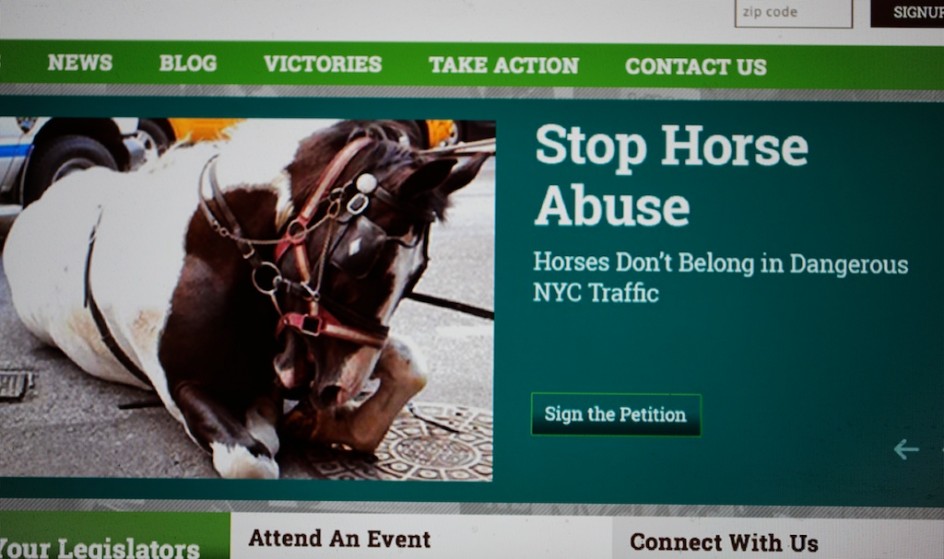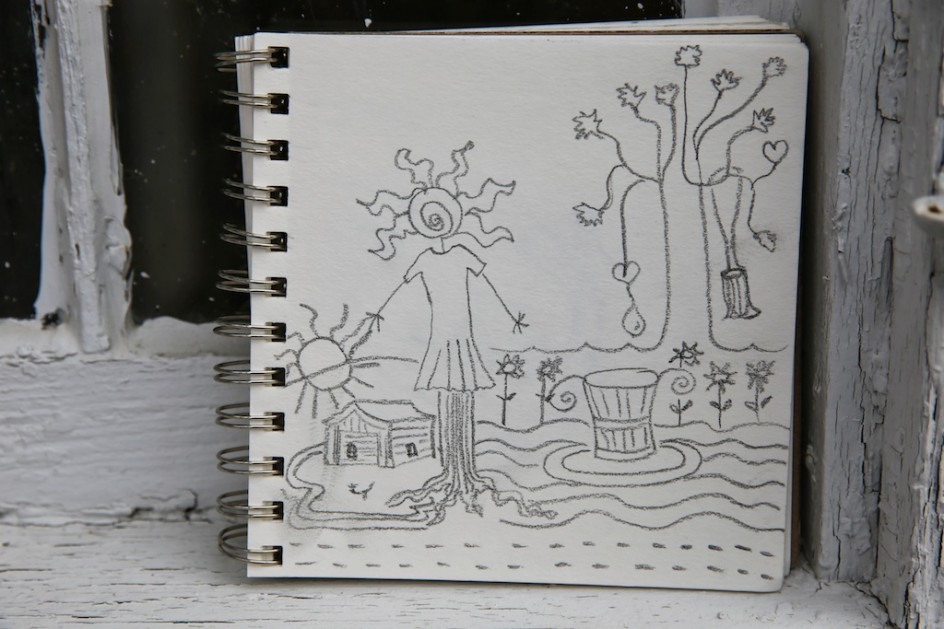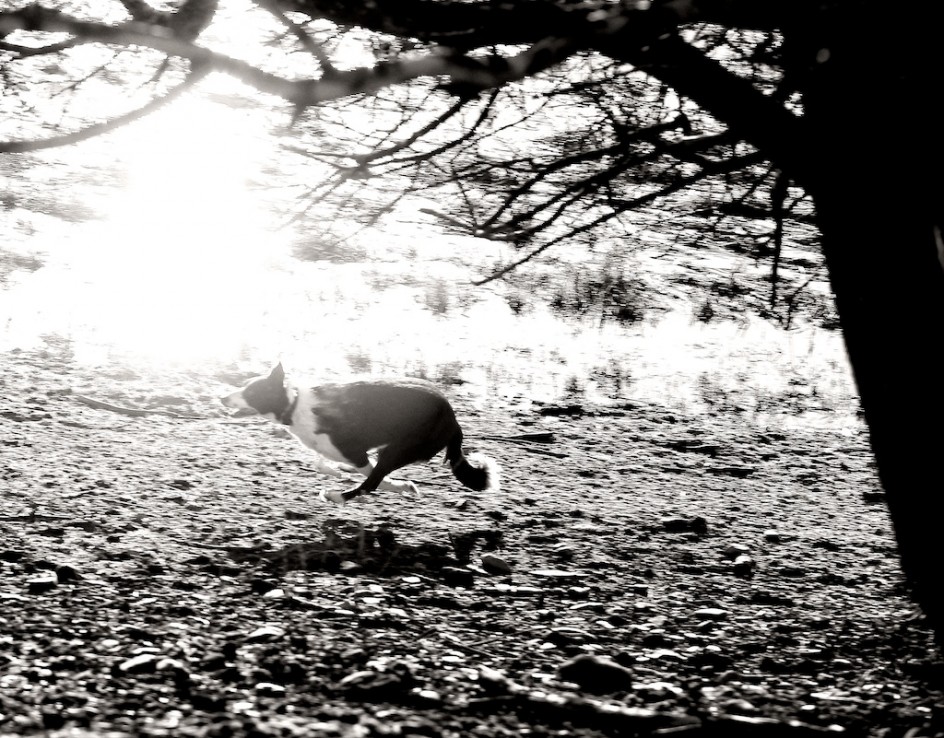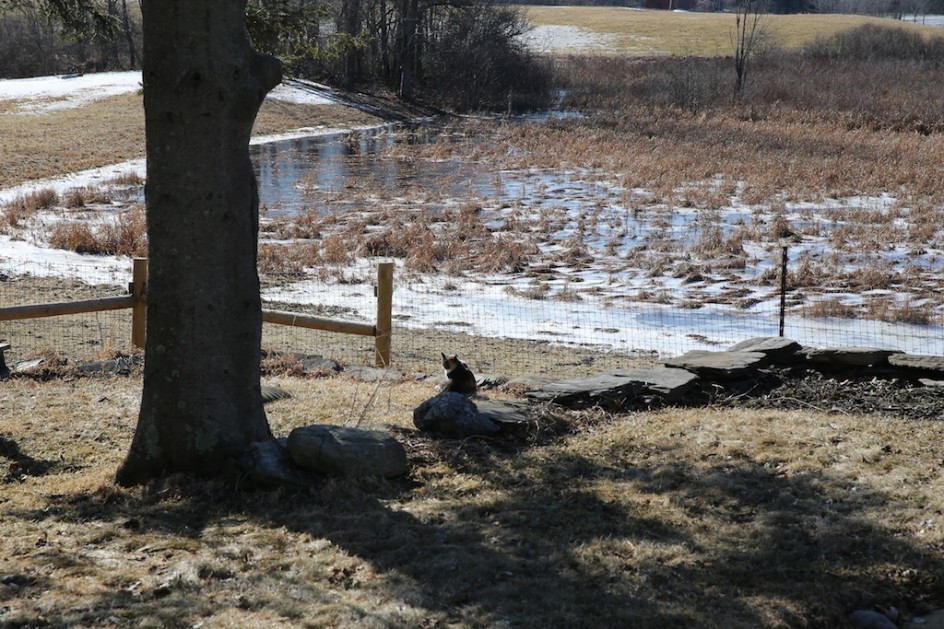
There is perhaps no crueler thing one can say to a person who loves and lives with animals then that he or she abuses them.
It is, in so many ways, the cruelest kind of slander in that it is hurtful and almost impossible to answer. I have been accused of animal abuse three times.
Once when I euthanized a dog after he bit three people; again when I returned a flock of elderly sheep to a poor farmer who couldn’t afford to keep them alive and sent them to slaughter; and again, when I chose to euthanize a blind and aging pony who was being attacked by my donkeys and was facing another winter.
Each time, I was called an abuser of animals, and each time, it was not true by any moral or ethical standard I know of. Almost every one of my accusers lived in a city or suburb and had little or no contact with animals which were not dogs or cats.
I came to understand the great and widening schism in the animal world. There are people in America who have pets and people who have animals, and many of the people who have pets have lost touch with the natural world, and the real lives of real animals.
I recognize them, every day, in the carriage horse controversy. They are the people who call themselves supporters of animal rights, and they are the sole architects of the new abuse.
It is painful for any animal lover to see – over and over again – an image of an abused animal like the one above. These images are the new propaganda of the animal world – images of abused animals are one of the mainstays of social media, the world’s most emotional, unthinking and unfiltered medium.
The specter of abuse is also one of the most lucrative solicitations one can offer to people who love animals. NYClass, the organization spearheading the drive to ban the horses, uses the above photo and slogan as a logo for their website. It is up their every day; it is an Internet sensation, it generates thousands of petition signatures, volunteers, draws celebrities, political support, gobs of cash. The poor carriage trade owners, the working class children of immigrants mostly, have seemed until recently, almost helpless in the face of such an onslaught. How does one prove he is not an abuser, what image can counter that?
For the animal rights movement, the idea of the abused carriage horse has been spectacularly lucrative. The allegedly abused horse above is the Golden Calf of the campaign to drive the horses out of the New York. The group and it’s leader had more than a million dollars to offer the campaign of the city’s new mayor, Bill deBlasio, There were hundreds of thousands more for the City Council President and other candidates, and they had another half-million dollars left over to take out ads pushing the horse ban and to design those “cruelty-free” eco-friendly fake vintage antique electric cars.
There was still more left to hold some high-tone fundraisers in swanky Manhattan hotels, complete with photos of pols in black ties, grinning for money.
The old stereotype of the animal rights activists – kids in T-shirts waving cardboard signs – is over. The animal rights activists are the new corporate tycoons of the animal world.
The evocation of the abused horse – often seen kneeling poignantly or lying on a pavement – has been the focal point of the supporters of the horse ban for years, it is the foundation of the movement to exile them to rescue farms or, more likely, slaughterhouses. Although the accusations against the carriage trade have grown, even mushroomed, into all sorts of allegations, without the original and daily accusations of abuse there would be no campaign to ban the horses.
That means it is critical to pose a question that, shockingly enough, doesn’t seem to have been asked much by the city’s media, political leaders, animal rights supporters, or residents: Is it true? Are the horses abused?
The term abuse is all over the animal rights websites, all over Facebook and the Internet, all over discussions of animals in America. If you think about it, you are very likely to meet a dog on any street of any American city whose owner will volunteer that the dog has almost surely been abused. If you trawl the Facebook and other Internet rescue sites, it sometimes seems that there are no animals that are not being abused.
The new definitions of abuse are everywhere in the carriage horse controversy. Politicians and animal rights organizations do not confine themselves to the traditional and legal definitions of animal abuse or cruelty any longer . Their ideas seem new and fluid; they change to meet their own emotions, goals, fund-raising needs, social agendas, and to justify what they are doing. Some groups now consider work like carriage-pulling to be abuse, even though it has been practiced for centuries and has never been considered abuse.
Others have expanded their notions of abuse to include the tethering of animals like dogs to trees or fences, or leaving them alone, or letting them run freely. Some groups seek to ban outdoor cats or the use of animals in laboratory experiments. Farmers say they are staggering under an unending stream of expensive regulations and rules fostered by animal rights groups showering legislators with money and petitions outlawing “abusive” practices that have been used on dairy and other farms for generations. Some animal rights groups seek to make the breeding of dogs and other animals illegal, considering it unnatural and cruel. Sports like horse race are increasingly under scrutiny and investigation for alleged abuse of horses.
Pet stores, once the mainstay of retail animal stores, have largely been driven out of business by new laws and restrictions seeking to outlaw them and to target puppy mills, a worthy target of animal lovers. Pet stores have vanished from malls; unsavory breeders have largely moved to the unregulated terrain of the Internet.
There is little doubt that some of these targets were and are abusing animals; it is also true that animal rights organizations have largely become authoritarian and invasive, conducting inquiries, secret investigations, often going to war with people who love and live with animals. It is sometimes hard to distinguish animal lovers from the police.
In rural life, where I live, many long-standing animal practices are now considered abuse by the mostly urban-center organizations that call themselves supporters of animal rights. Farmers usually let their dogs roam freely around here, I see them running alongside trucks. I know farmers who leave their dogs to wander the farm when they go away, leaving food for them in the barns. People here have grown up with working animals, they know domesticated working animals love to work with human beings. Some farmers prefer to shoot their dogs when they get sick and old, considering that more humane than taking them to die on the floor of a veterinary office. In many urban areas, these practices are considered abusive, they are illegal.
If we are confused about the meaning of abuse, politicians are happy to exploit the confusion. The animal right groups in New York hoped to see the horses banned in January, but that is proving complicated and is taking longer. The horses and their owners are not co-operating; they are not going quietly in the night. The animal rights organizations did successfully lobby the City Council to pass a new, somewhat Orwellian measure three previous mayors had vetoed – an animal abuser registry. Convicted animal abusers in New York City are now required to report to a registry similar to those created for sex offenders. New York City residents convicted of animal abuse crimes will be required to register upon their release from incarceration, if they are not jailed, they must register within five days of sentencing. First time offenders will remain on the registry for five years and those guilty of subsequent abuse, for 10 years.
There is no city registry for convicted murderers.
The carriage trade has wandered unknowingly into this brutal new collision of values, this redefinition of abuse. Carriage horses have existed in our world through most of human history. While many horses have been overworked and mistreated in their long time with us, hardly any have been as well treated or monitored as the New York Carriage Horses. How curious that their owners suddenly find themselves in the middle of a wrenching struggle for survival that would have been unthinkable even a few decades ago.
One of the least glamorous or notorious trades in western culture – the carriage driver – has become one of the most controversial, swept up in the wake of the new abuse.
The reason can be found on the websites and blogs where the very emotional and sometimes hysterical re-definition of animal cruelty and abuse is occurring.
The carriage trade is learning this lesson the hard way. The new abuse is upon us.
These groups are using images like the one above to raise enormous amounts of money and become politically significant, another new side-effect of the Internet. Few big-city mayors in American history have ever completely embraced the political agenda of animal rights organizations, but the animal rights groups have a lot of money now, and that has helped elect then a big-city mayor who is one of them. He believes it is cruel for horses to pull carriages, he believes animals like horses have no place in cities like New York.
Abuse is an increasingly difficult thing to see or define. It often mimics genetic or behavioral or training problems, and since animals don’t talk and abusers don’t brag much, I often ask people how they know their dog is abused – most dogs seem to be these days? How do they know the horses are abused? Do they tell us? Have their handlers confessed? Oh, it’s obvious, I’m told, the horse looks depressed, his ribs are showing, or the dog is afraid of sticks, or the people at the shelter told me, or the rescue volunteer suggested it. I have a lot of friends and know and have interviewed vets who work in shelters and rescue groups and every one of them has told me more than once that the quickest way to get a dog out of a shelter and into a home is to suggest he or she may have been abused.
My own sense is that the idea of the abused animal in need of rescue has gone over the top, it has become the primary prism through which America is beginning to see animals.
So what is abuse when it comes to animals like the carriage horses? The Humane Society of The United States – a group that has become increasingly politicized in recent years and all the less credible for it – claims that 65 billion animals are abused in the world each year, and on the same site say nobody knows how many animals are being abused. Their website claims that millions of animals die each year from abuse and that dogs seem to be the most abused animals. The term has different connotations for different animals. A pet is an animal kept primarily for a person’s company or or protection, as opposed to working animals, sport animals, livestock, laboratory or therapy animals. Abuse and cruelty is considered and defined differently for all of them.
Until recently, most of the interactions between people and their animals were considered personal, even private. That is no longer true, government is getting in quite deeply into the middle.
The people who own these animals and the people who call themselves supporters of animal rights now have wildly divergent notions of what abuse means and is. The people who own working dogs and working horses are shocked at the idea that work is abuse for animals, but it is a growing platform of the animal rights movement. The TV star Alec Baldwin and other celebrities are making a video in support of the horse ban in which Baldwin claims the horse carriages are “torture wagons.” The statement seemed like a laughable hyperbole to me, especially since Baldwin is known as an ignorant blowhard, but this view is taken very seriously, and has generated enormous amounts of money and support for NYClass and other groups.
So what is abuse, anyway, and how often does it occur? Despite the rhetoric online and from politicians, abuse is not a vague idea or opinion, or emotional response, it is a crime, and it has a legal definition. According to a legal dictionary, cruelty to animals is the crime of inflicting physical pain, suffering or death on an animal, usually a tame one, beyond what is necessary for normal discipline. It can include neglect that is so monstrous (withholding food and water) that the animal has suffered, died or been put in imminent danger of death.
PETA, the nation’s best known animal rights organization, offers a fact sheet of incidents involving horse-drawn carriages, it widely circulated on the Internet, I offer it here because people have the right to see it in this context and need to make up their own minds about the horses. But it is not possible to confirm any of the incidents listed here, and several that are reported to have occurred in New York were not confirmed by the police and did not show up in records or online searches. It is not clear if all of these incidents occurred, or how they occurred, but it does not seem that any of them were the result of deliberately cruelty or intent to harm, the definition of abuse. Take a look for yourself.
The list mixes farm, Amish, carriage trade, even private, incidents involving horses and traffic. It is also not clear what proportion of rides and journeys and interactions the accidents represent. Accidents happen to people as well as animals, none of us live in a perfectly safe world. Context is critical to understanding the idea of safety and abuse.
When I saw the “Stop Horse Abuse” accusation on the NYClass website, I called the New York Police Department. They told me of one arrest in 150 years for abuse, that was in December, at the end of a heated mayoral campaign in which the horses had become a major campaign issue. A driver was charged with animal cruelty for driving a horse with thrush, a hoof infection. The story was major news in New York, it was covered much more prominently than the six murders that occurred in the city that day and a breathless New York Times story quoted animal rights advocates as saying the arrest proved the horses needed to be banned from the city.
Unnamed animal experts, said the reporter, warned that the horse could have died from thrush.
This is true, but any animal can die from any untreated infection, Thrush is caused by dirty, usually unmucked stabling and is easily treated, the horse was back to work quickly after a two-week vacation and is working and healthy now. It was appropriate to cite the driver, of course, but a case of Thrush is not really that big a deal in the context of systematic abuse, it is difficult to keep stables spotless, horses drop a lot of manure and not always on time. It does not come close to justifying wiping out an entire industry, putting 300 people out of work and banishing the horses from New York City.
There have also been a few citations against the carriage drivers for overworking horses – 10 hours rather than eight – and two for overcharging tourists. But abuse is a crime, not an argument, and if there is continuing evidence of abuse against the horse, why aren’t the accusers presenting it to the police now? I’m certain the mayor would be overjoyed to learn about carriage horses being abused, and I’m sure his new police commissioner would be happy to make some arrests.
The A.S.P.C.A., the Humane Society of the United States and the New York Police Department all say there are no accurate or reliable statistics on the number of animals that are abused. The animal rescue site Petfinder says “no one knows how many animals are abused or neglected in America each year.” According to the N.Y.P.D. there are approximately 4,000 plus animal-abuse-and-neglect calls that come in every year to the police in New York City. Most of them are from neighbors reporting things they see or suspect, the great bulk of them do not result in prosecutions or arrests. In the past five years for which records are available, none of these complaints were made against carriage owners or drivers, and none were made regarding abuse of the carriage horses.
How are citizens to reach any kind of informed judgement if they are bombarded by these manipulative and disturbing images, but then learn there are are simply no facts, incidents, procedures or other information to support these claims? If the horses must be banned because they are being cruelly mistreated, even tortured, if we must stop horse abuse, as NYClass is demanding that we do, why wasn’t there a single allegation of abuse made against the carriage trade all year, or in the preceding four? That would require a massive cover-up on a grand scale.
Animal advocacy groups are nearly hysterical in their alarms about animal abuse – they take in many millions of dollars in that way – but they are thin on facts or details. Or research, it seems. The Humane Society of the United States states clearly on its website that there are no figures available on the number of animals abused in America, there is no national reporting system. On another page, the HSUS says “the shocking number of cruelty cases reported daily in the media is only the tip of the iceberg. Most cases are never reported, and most animal suffering goes unrecognized or unabated.”
I was a reporter for more than two decades, and an editor after that. I have to wonder how, if most abuse cases are submerged, and few are reported or seen, does the HSUS know that the cases that are reported are only the tip of the iceberg? I wonder if part of the reason is that people are much less likely to send in their hard-earned money to build $450,000 vintage electric cars that will hopefully never be seen in Central Park if they think abuse occurs less frequently than animal rights groups suggest.
The few studies that have been done nationwide on abuse – two veterinary association surveys, one by the University of Pennsylvania Veterinary School, another by the animal scholar James Serpell – have all found that animal abuse occurs in America, but that it occurs much less frequently than people are led to believe, or than the media leads them to believe.
It’s those images of fallen horses; they are made for the Internet; they are all emotion and no perspective.
All of these studies find that people are quick to attribute behavioral and other problems to abuse. The studies reach the opposite conclusion of the animal rights movement – there might be less below the tip of the iceberg than we think. But without this notion of abuse, and without the idea that it is massive and epidemic, the power, relevance and importance of these groups – and their fund-raising abilities – would be greatly diminished.
There are some useful statistics to consider when it comes to abuse. In media-reported animal cruelty cases, says the HSUS, 64 per cent involved dogs, 18 percent involved horses, 25 percent involved other animals. According to the American Horse Council, Americans own more than 9 million horses. Of the more than two million Americans that own horses, more than one-third have a household income of less than $50,000. The society seems to be suggesting that people with less money are more likely are more likely to abuse or neglect their horses for economic reasons.
But the bottom line is pretty clear, and getting clearer, for all of the hype and hysteria. We do not know how much animal abuse there is in the United States; there is nothing like universal agreement as to what abuse even is, the legal definitions have been largely abandoned by the new animal advocates. Emotional images are a lot easier and more effective. Perhaps that is the discussion politicians and legislators need to have about animals in America: what is abuse, really? And can anyone with a website, or any politician seeking election funds, re-define it in their own way for their own purposes? Is slander a valid tool for a more compassionate view of animals?
The NYClass site guarantees that every single one of the horses will go to a loving home, but that is perhaps a screen for another new kind of abuse, not a shield against it. The animal rights groups do not own the horses; they cannot dictate where they will go, they cannot possibly know where they will go. The mayor has not re-defined private property yet – and none of them has revealed just who and where the loving homes are and who will pay for the horses care. All over America, horses are being sent to slaughter – more than 155,000 last year – because rescue farms are overwhelmed and underfunded. Are there really rescue farms waiting to receive 200 big and healthy and hungry draft horses? Is it possible to love our animals to death?
It seems cruel to me to inflict on the horses the pain of being uprooted from their work, companions, humans and homes to be traumatized beyond what is necessary for normal or healthy life. It is both insensitive and monstrous to cause a healthy and content animal to suffer and be put in imminent danger of death, in the name of preserving animal rights.
It sounds like the old kind of abuse to me, and abuse is a crime not an argument.



